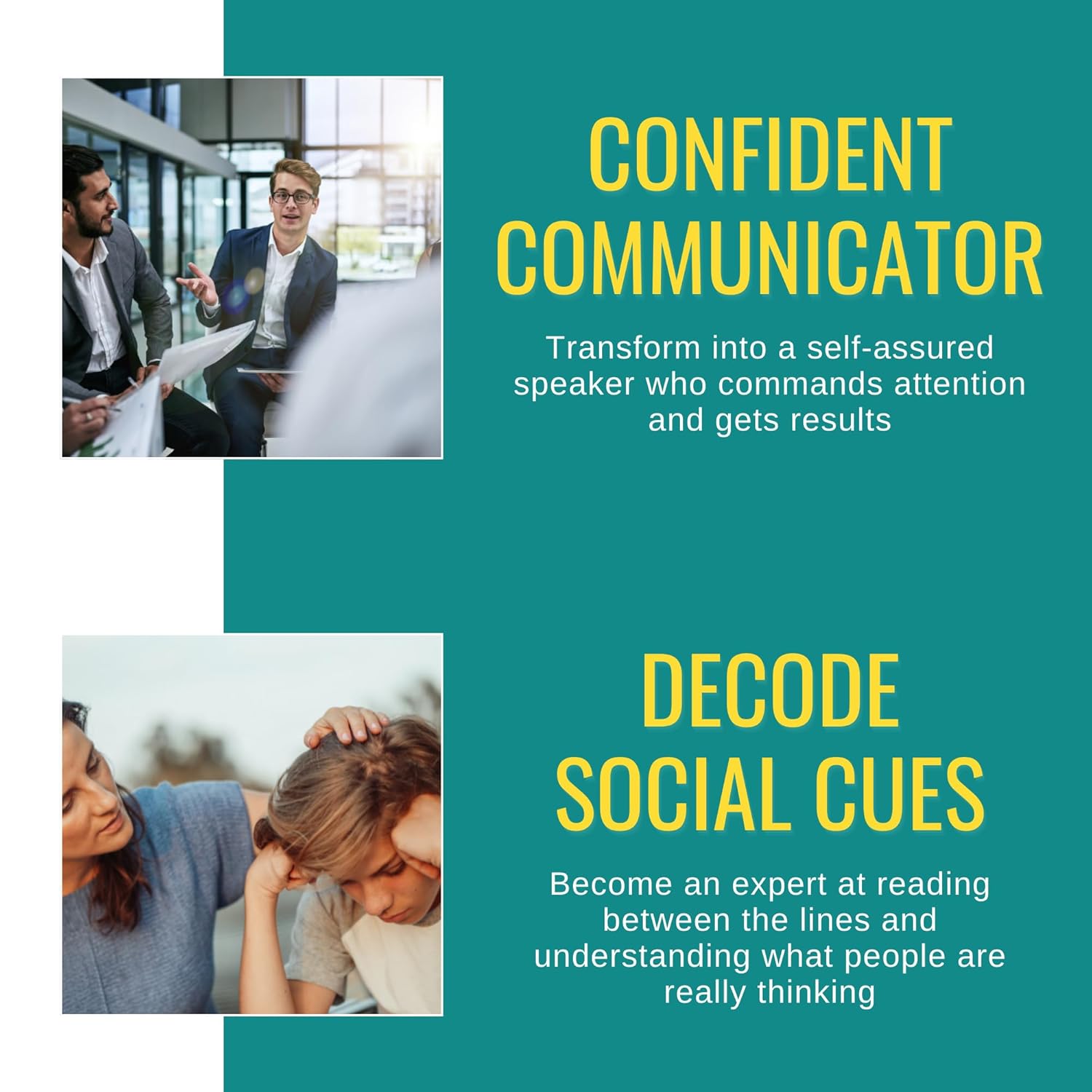I’m thrilled to share my thoughts on Effective Communication [3 in 1] by Emma Leigh Weber, a book that promises to transform your conversational skills and facilitate stronger relationships. As someone who has always been intrigued by effective communication, I was drawn to this book, eager to explore its approaches and techniques for better interpersonal exchanges.
Upon diving into the book, I found it to be a comprehensive guide that indeed lives up to its description. Weber carefully outlines various aspects of communication, from mastering persuasion in "The Art of Influential Mindset" to decoding social cues in "The Art of Intrapersonal Interactions" and harnessing storytelling in "The Art of Storytelling." The book is well-structured and offers a plethora of practical tips that cater to various audiences: professionals, students, and anyone looking to enhance their interpersonal skills.
One aspect I particularly enjoyed was the focus on influence and persuasion techniques. I’ve often found myself in conversations where my points felt overlooked, leaving me frustrated. However, Weber’s strategies for overcoming objections and building rapport resonated with me. I made a note to practice these techniques, leading to noticeably better interactions in both personal and professional settings.
I must say, reading about the importance of storytelling in communication was a revelation. Crafting compelling narratives to captivate an audience isn’t just interesting; it’s an essential skill that can leave a lasting impact. This section alone could change how many of us approach storytelling, encouraging us to put more effort into how we present our ideas.
However, it wasn’t all roses. Some criticisms I’ve encountered in discussions about this book include the lack of depth in some topics and a somewhat generalized presentation. While the techniques are clearly laid out, they can sometimes come off as repetitive and a bit superficial if you’re looking for in-depth analysis. I found myself yearning for deeper dives into certain sections, particularly within “The Art of Storytelling.” More examples and case studies could have added valuable context.
On the positive side, Weber’s conversational yet insightful writing engages the reader while providing actionable advice. It’s motivating, and you can’t help but feel empowered by the time you finish a chapter. The exercises included at the end of some sections prompt you to practice what you’ve learned, which I found immensely helpful.
Another aspect worth mentioning is that while the book is an excellent resource for improving communication skills, it requires dedication to implement the strategies successfully. It’s easy to feel inspired while reading but harder to put those techniques into practice. Personally, I had to work on making the shifts from theory to practice, but I genuinely believe that fellow readers intending to enhance their communication will see results as they apply these principles.
Overall, Effective Communication [3 in 1] meets my expectations of providing a robust framework for improving communication skills. The book is informative and actionable, aligning well with the increasing need for effective communication in today’s fast-paced world. It paves the way for creating impactful interactions, which is exactly what it sets out to do.
In conclusion, I highly recommend this book to anyone eager to enhance their communication skills or build more meaningful connections, whether in their personal life or professional realm. Despite a few drawbacks, it’s a solid read that is both empowering and enlightening. If you’re ready to transform how you connect with others, look no further than this gem.








